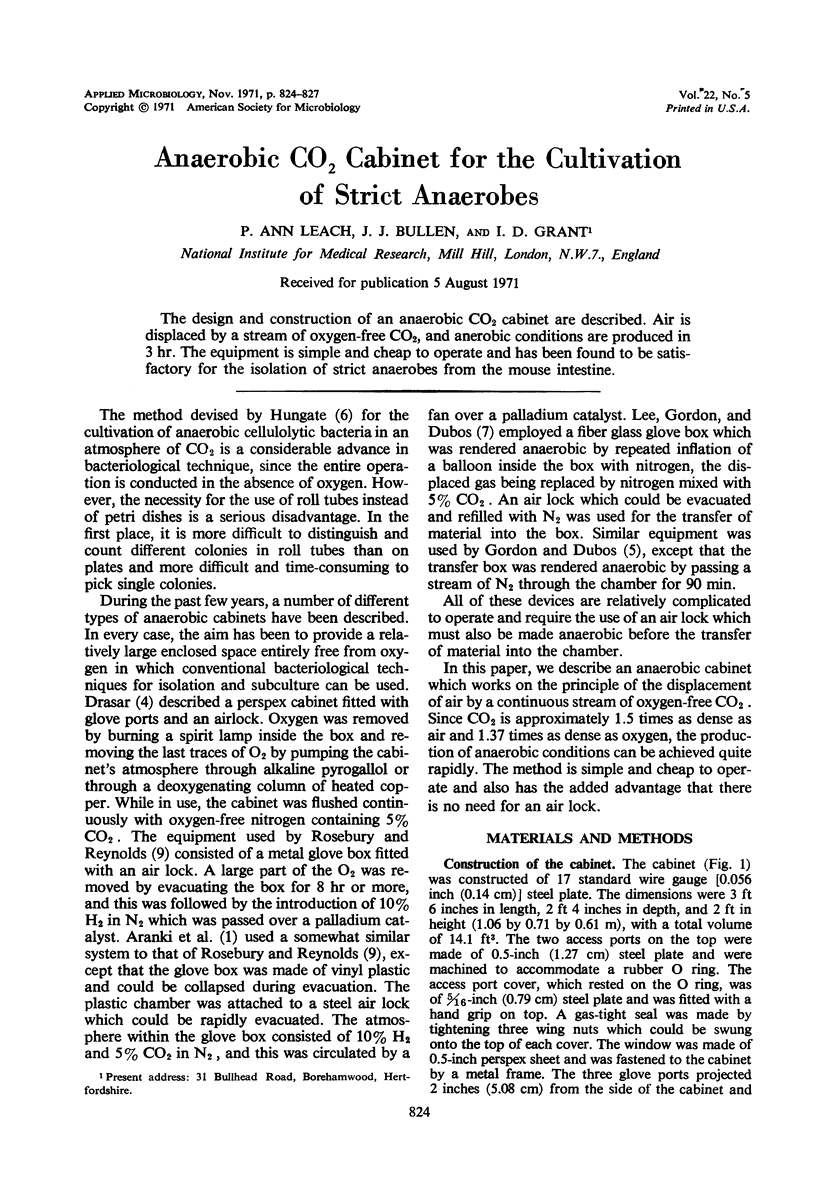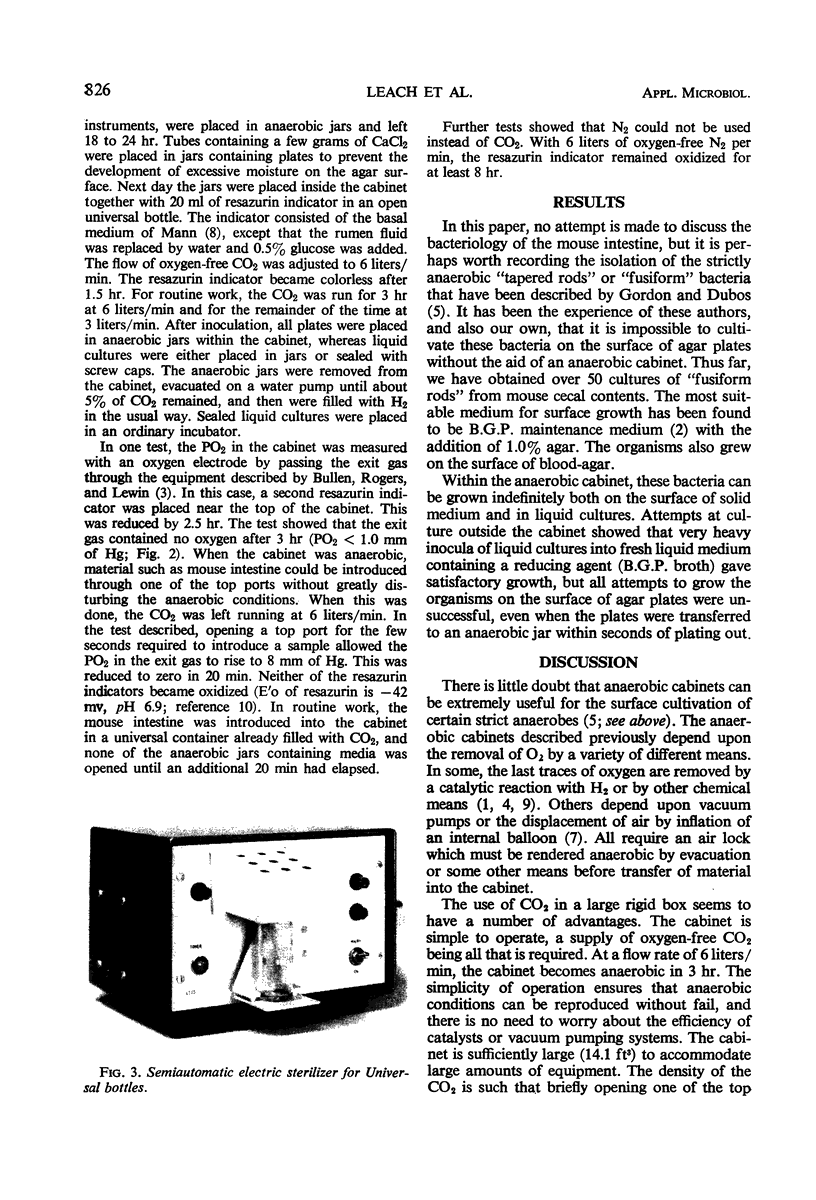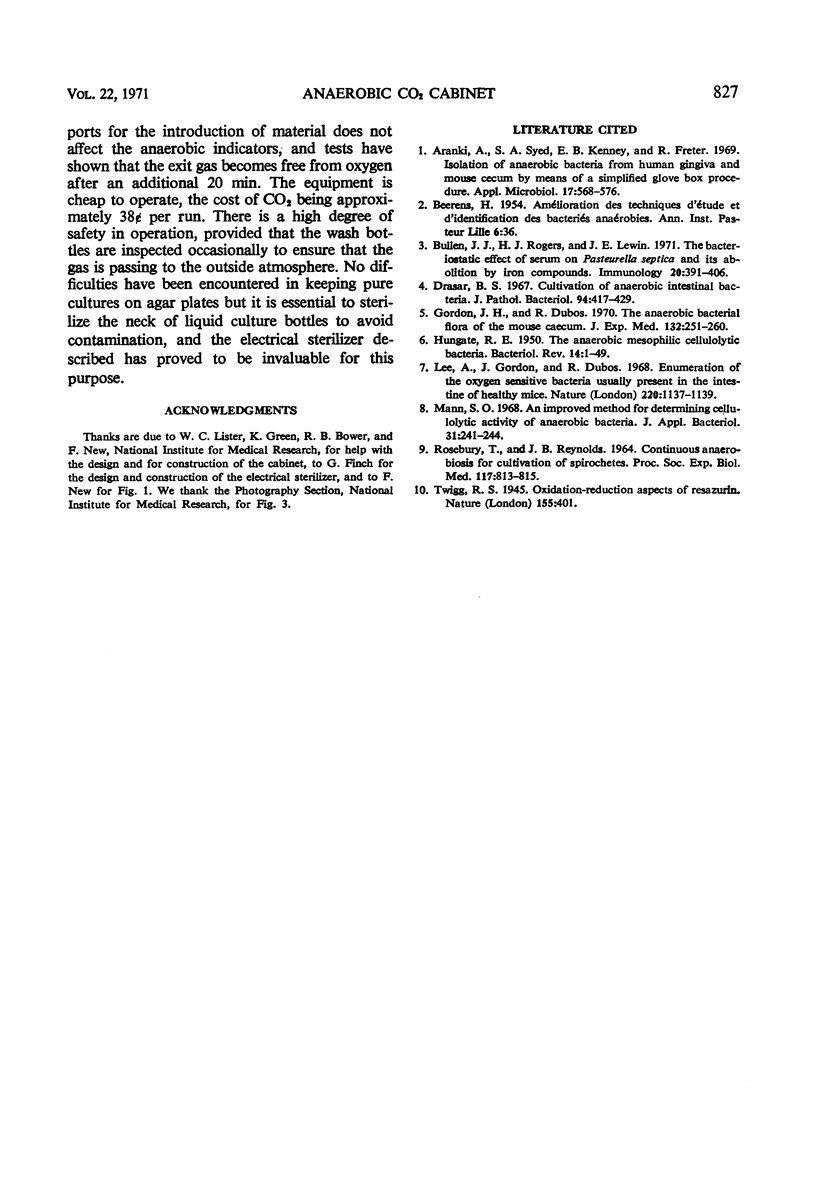Abstract
The design and construction of an anaerobic CO2 cabinet are described. Air is displaced by a stream of oxygen-free CO2, and anerobic conditions are produced in 3 hr. The equipment is simple and cheap to operate and has been found to be satisfactory for the isolation of strict anaerobes from the mouse intestine.
Full text
PDF



Images in this article
Selected References
These references are in PubMed. This may not be the complete list of references from this article.
- Arank A., Syed S. A., Kenney E. B., Freter R. Isolation of anaerobic bacteria from human gingiva and mouse cecum by means of a simplified glove box procedure. Appl Microbiol. 1969 Apr;17(4):568–576. doi: 10.1128/am.17.4.568-576.1969. [DOI] [PMC free article] [PubMed] [Google Scholar]
- BEERENS H. Amelioration des techniques d'etude et d'identification des bacteries anaerobies. Ann Inst Pasteur Lille. 1953 1954;6:36–48. [PubMed] [Google Scholar]
- Bullen J. J., Rogers H. J., Lewin J. E. The bacteriostatic effect of serum on Pasteurella septica and its abolition by iron compounds. Immunology. 1971 Mar;20(3):391–406. [PMC free article] [PubMed] [Google Scholar]
- Drasar B. S. Cultivation of anaerobic intestinal bacteria. J Pathol Bacteriol. 1967 Oct;94(2):417–427. doi: 10.1002/path.1700940223. [DOI] [PubMed] [Google Scholar]
- Gordon J. H., Dubos R. The anaerobic bacterial flora of the mouse cecum. J Exp Med. 1970 Aug 1;132(2):251–260. doi: 10.1084/jem.132.2.251. [DOI] [PMC free article] [PubMed] [Google Scholar]
- HUNGATE R. E. The anaerobic mesophilic cellulolytic bacteria. Bacteriol Rev. 1950 Mar;14(1):1–49. doi: 10.1128/br.14.1.1-49.1950. [DOI] [PMC free article] [PubMed] [Google Scholar]
- Lee A., Gordon J., Dubos R. Enumeration of the oxygen sensitive bacteria usually present in the intestine of healthy mice. Nature. 1968 Dec 14;220(5172):1137–1139. doi: 10.1038/2201137a0. [DOI] [PubMed] [Google Scholar]
- Mann S. O. An improved method for determining celluloytic activity in anerobic bacteria. J Appl Bacteriol. 1968 Jun;31(2):241–244. doi: 10.1111/j.1365-2672.1968.tb00363.x. [DOI] [PubMed] [Google Scholar]
- ROSEBURY T., REYNOLDS J. B. CONTINUOUS ANAEROBIOSIS FOR CULTIVATION OF SPIROCHETES. Proc Soc Exp Biol Med. 1964 Dec;117:813–815. doi: 10.3181/00379727-117-29706. [DOI] [PubMed] [Google Scholar]



